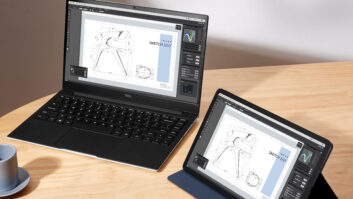The Motorola Razer (2019) seriously impressed us when it arrived last year, particularly given how it sent us on a nostalgia trip to the forgone days of the flip phone when the original Razr was king. But that’s just about all we did like, because the phone itself suffered from a paltry battery life, a disappointing camera, and generally lacked the police you’d expect from a $1,500 phone.
The sequel has sent Motorola back to the drawing board, with a new foldable Razr that looks exactly like the original did. We liked the look of the 2019 model , so this isn’t a bad thing, especially since Motorola has made a bunch of changes to the insides. Changes that have addressed the many complaints people had last year, alongside the all-important 5G connectivity.
We haven’t had a chance to go hands-on with the new Motorola Razr just yet, so we can’t fully determine how effective Motorola has been at adapting and improving its foldable phone for its second generation. But everything we’ve seen so far suggests that it’s making a very good second impression – and that it’s ready to challenge other foldable flip phones like the Samsung Galaxy Z Flip.
New Motorola Razr price and availability
The new Razr is out now, and you buy the $1,399 phone unlocked from Motorola , though it can also be purchased at the likes of itself as well as Amazon, Best Buy, and B&H Photo. AT&T, Verizon, and T-Mobile all offer the Motorola Razr as well.
The $1,399 price tag for the 5G Motorola Razr is $100 less than what Motorola charged for the original Razr, as well as a $50 discount on the Galaxy Z Flip 5G. It’s also the same price as the Microsoft Surface Duo, which has no 5G connectivity at all. The Galaxy Z Fold 2 remains the priciest of the foldable phones at $2,000.
New Motorola Razr design changes
Not to put too fine a point on it, but we didn’t care for the feel of the original Razr, which didn’t offer a design that lived up to its lofty price tag. The phone was very difficult to open with one hand, and a noticeable gap appeared between the flexible display and chassis as you opened and closed the device. The hinge made a faint creaking sound, and the screen had bumps, lumps and noticeable creases.
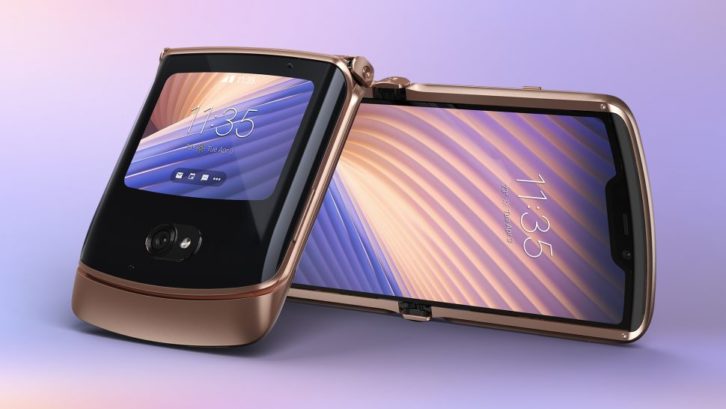
We can’t say for sure that Motorola has tackled every one of those issues, at least until we get the new Razr in for testing. But there are some visible improvements to this version. Start with the phone’s chin, which is more tapered and not as chunky as it used to be. That’s because it no longer houses the phone’s fingerprint sensor; Motorola moved that to the back of the Razr, housing it under a Motorola logo. It’s a definite improvement, at least visually.
Motorola says it uses a teardrop folded display on the new Razr. It’s a significant design move because it allows both sides to be perfectly flush when the Razr is folded shut. A new hinge design also eliminates the gaps that bedeviled the first foldable Razr. The improved hinge should also make the phone easier to open with one hand, something we plan on testing the moment the new Razr lands in either one of our hands.
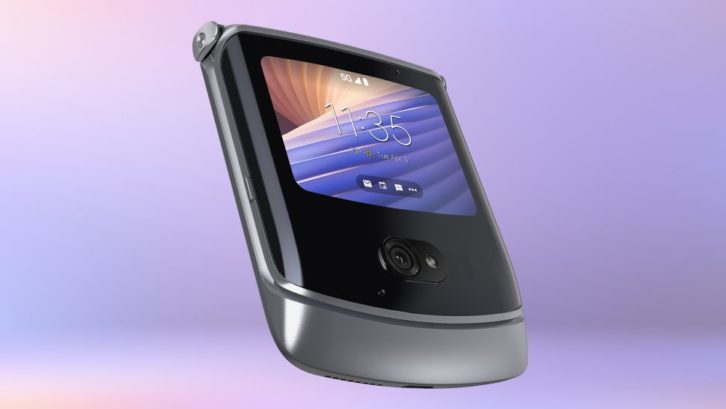
As for durability, Motorola claims the hinge can stand up to 200,000 flips. By Motorola’s math, only the most obsessive of users opens their Razr 100 times a day. (The average is about 40 opens.) That means you should be able to open and close the new Razr for five years before you reach the outer limits of the hinge’s durability.
Motorola has also used polished 3D glass on the front and back of the phone along with 7000 series aluminum around the frame to give the Razr a more stylish look. That’s an improvement over the original’s predominantly plastic construction. You’ll be able to get the phone in Polished Graphite, Liquid Mercury, and Blush Gold.
New Motorola Razr Quick View improvements
If there’s one aspect of the Razr that seems to have gotten the most attention, it’s the 2.7-inch Quick View display on the outside of the phone. The Quick View screen had its uses on the original Razr — you could use it to glance at notifications or interact with the Google Assistant. It also made a handy viewfinder for taking selfies. But you can do a lot more with the Quick View screen on the new Razr.
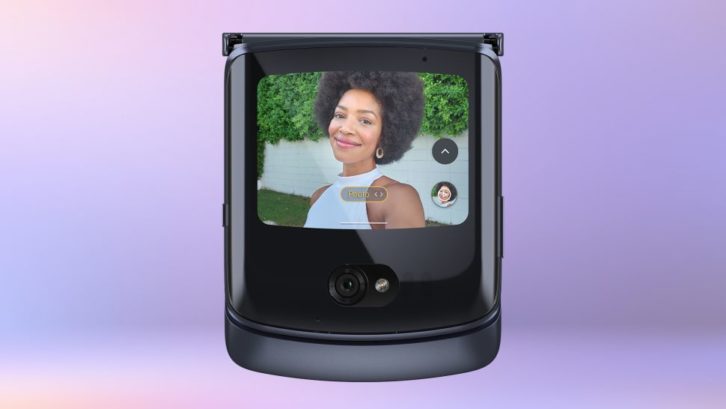
For starters, the exterior touchscreen now supports gesture controls. Swiping right summons the camera app, while a couple leftward swipes bring up your favorite contacts. You can then tap on one of those contacts to place a phone call — all without ever having to flip open the Razr. You can also bring up the home screen and the app tray on the Quick View screen with swipe gestures.
Placing phone calls isn’t the only new trick the Razr’s Quick View display has learned. You can now respond directly to the incoming messages you’ve received without having to open up the phone. You have the option of dictating a reply through speech-to-text, tapping on smart replies or tapping out a message on the new full-screen keyboard that can appear on the Quick View display.
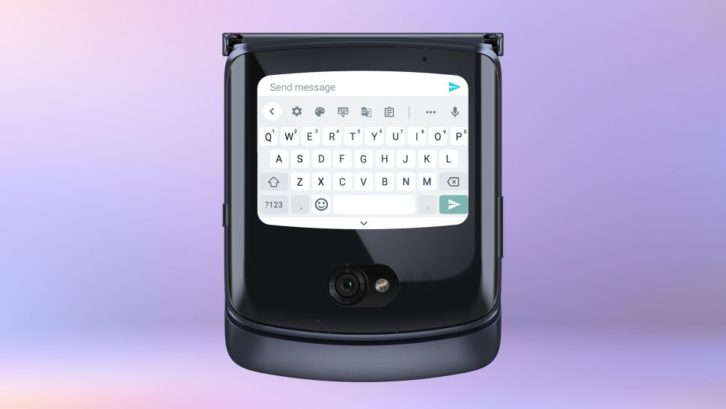
You can also run apps on the Quick View display, and some — like Google Maps and its turn-by-turn directions — have been optimized for the compact screen. Motorola also mentions Spotify, YouTube Music and Pandora as apps with playback controls well suited to the Quick View display.
There’s a perfectly reasonable explanation for why Motorola has lavished this much attention on the smaller of the two displays on the Razr. In talking to its customers, the phone maker found that the Quick View screen was a major reason why they bought the Razr. Like the Galaxy Z Fold 2 and its newfound focus on productivity, the Quick View display also offers Motorola a chance to exploit the unique attributes of a foldable phone. And there’s also a contrast to be drawn with the Galaxy Z Flip, which has just a 1.1-inch exterior display that’s more limited than the Razr’s.
New Motorola Razr specs
Motorola has upgraded the chipset in the new Razr from a Snapdragon 710 to the Snapdragon 765G. That should give the Razr a performance boost over its predecessor, but the more appealing addition from the new system-on-chip is its included 5G modem. That allows the new Razr to connect to 5G networks without having to change its sleek design.
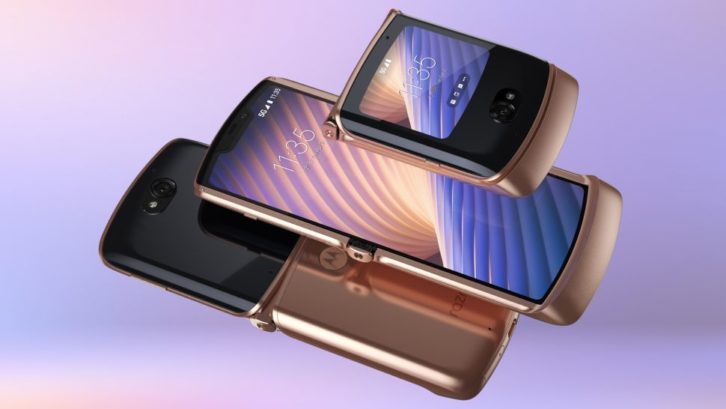
Motorola equipped the Razr with four 5G antenna — two in the phone’s base and another two traversing the hinge on the flip side. The idea is that no matter how you’re holding the phone, you should be able to get a signal if one’s available. The Razr connects with 5G networks built on sub-6GHz spectrum, so it works fine on the nationwide networks of AT&T and T-Mobile; Verizon’s mmWave-based 5G won’t work at all on this phone, though.
The camera lens on the outside of the Razr can double as a rear-facing shooter and a selfie cam, depending on how you’re holding the phone and whether its screen is flipped open. You’re shooting with a single 48MP camera that relies on quad-pixel technology and uses optical image stabilization for better shots in low light. Alongside the camera, there’s a time-of-flight sensor that also features laser auto focus so that the camera is ready to shoot more quickly. When you open the phone, there’s a 20MP quad-pixel camera that primarily comes in handy for video chats.
Battery life was a big bugbear with the original Razr, as that phone’s 2,510 mAh battery conked out after a little more than 6 hours on our battery test. The 2,800 mAh battery in the new Razr isn’t that much bigger, but aided by the power efficiency of the Snapdragon 765G silicon, the Razr 5G should last a little longer on a charger.
New Motorola Razr outlook
Specs only tell you so much about a foldable phone. You really have to use this kind of device on a daily basis to see whether its form factor can stand up to regular use and if the design fits in with how you use your phone. So we’re limited in just how much we can evaluate the new Motorola Razr at this time.
But the design changes Motorola is touting suggests the phone maker has a pretty good idea on what it needs to do to fix the mistakes of its first foldable effort. And the newfound capabilities of the Quick View screen indicate that the Razr 5G is going to be a more practical phone than before. We’ll learn just how much it’s improved when we get a chance to test this new device.
This article originally ran on tomsguide.com
See also: Rode’s New Mobile Vlogging Kits Turn Your Smartphone Into A Portable Studio




